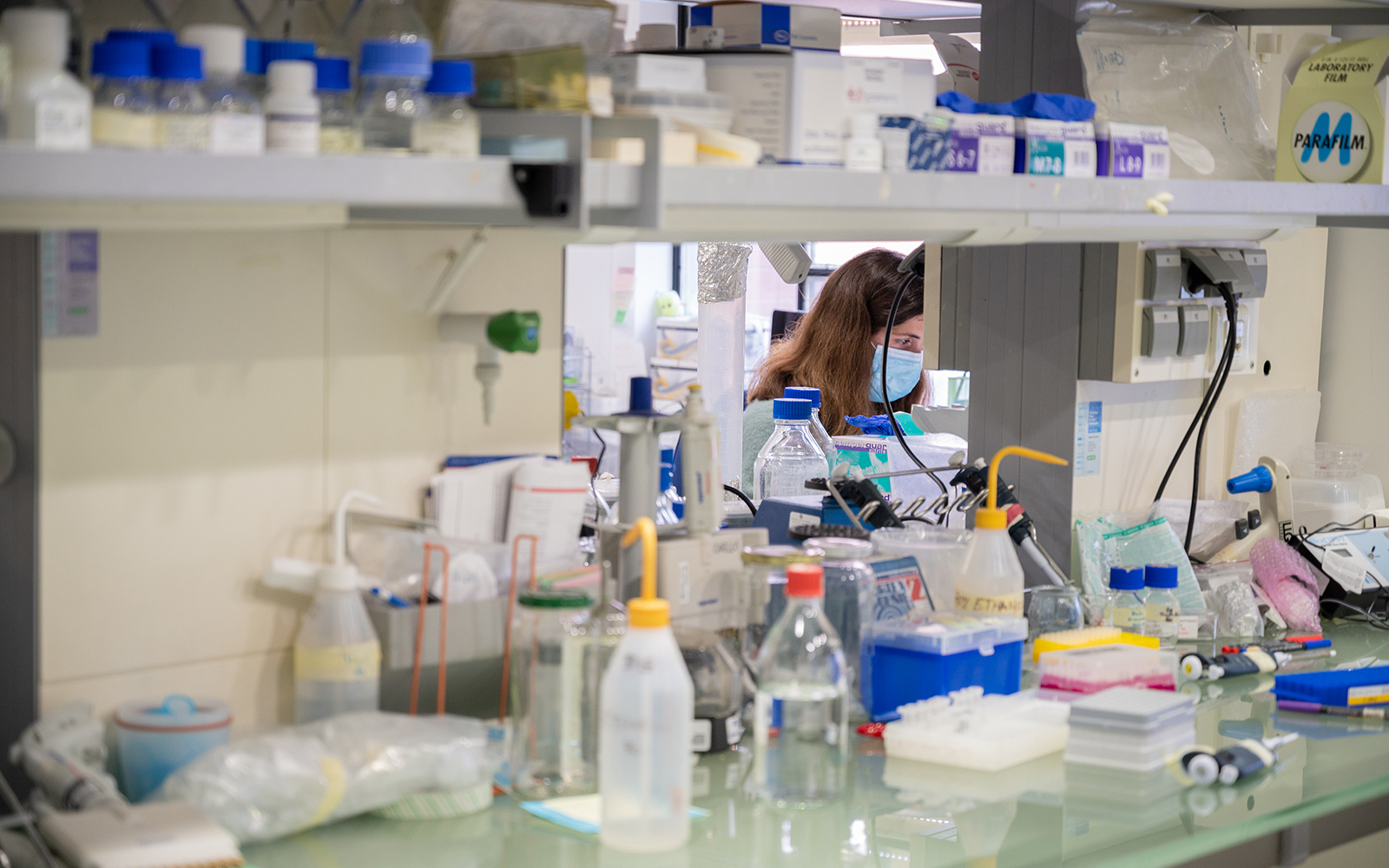Temperature determines the antiviral effect of Wolbachia

In 2008, a breakthrough discovery reshaped our knowledge on the interactions between microbes and their hosts. Two independent studies proved that flies could resist viral infection if they had a very particular microbe in their bodies—a bacterium named Wolbachia. One of such studies was authored by IGC principal investigator Luís Teixeira, at the time a postdoctoral researcher at the University of Cambridge.
Wolbachia is an extremely successful microbe that is transmitted from mothers to their progeny and is found inside the cells of flies, mosquitoes, and many other insects. Once inside the host, alongside the protective antiviral effect, it shows a unique ability to manipulate reproduction. In essence, individuals that carry Wolbachia are better at reproducing than the ones that do not. This trait is key for the success of this microbe, allowing it to spread easily within a population.
The transfer of Wolbachia from Drosophila flies to mosquitoes that transmit dengue revealed later that the antiviral protective effect also occurs in these insects. From fundamental science, an application was born and, with it, the World Mosquito Program. The idea? Use Wolbachia to fight mosquito-transmitted viral diseases. Releasing Wolbachia-carrying mosquitoes, which spread easily because of their reproductive advantage, would halt viral transmission from infected to non-infected people. Recent reports from Indonesia already show that dengue transmission is drastically reduced using this strategy.
Thirteen years after the reports on the protection Wolbachia gives to its insect hosts, a new study, published in the journal mBio, brings us one step closer to understanding how it does so. The results reveal that protection against viruses is determined by the temperature at which Drosophila flies develop from egg to adult. “When we change the temperature of development, we see that the protection is reduced or completely abolished in some conditions”, reveals Luís Teixeira, who led the team that conducted the study.
“Back in Cambridge, when I discovered that Wolbachia gives protection to viruses, I chose to develop the flies I was working with at 25°C, to speed up their growth. Then, after infecting the adults with viruses, I placed them at 18°C, so that infection would proceed slower and potential effects on the protection would be easier to detect”, Luís describes. After his group moved to IGC, an unplanned change in temperature turned into a fortunate stroke of serendipity. Altering the temperature of development to 18°C reduces the protective effect of Wolbachia. “These results are puzzling. We see that the temperature during development, before infection, is important. But protection happens afterwards, in the adults. It seems that something changes during the fly development that allows this Wolbachia protection. But we don’t know what it is.”
Understanding the effect of temperature in this host-Wolbachia-virus interaction is crucial for the success of initiatives like the World Mosquito Program. Wolbachia has been shown to protect mosquitoes not just against dengue, but also zika and yellow fever. If the temperature of development can affect this interaction in mosquitoes like it does in flies, it is imperative we learn more about the conditions in which it does so in the future. For geographic regions with lower temperatures, this might draw the line between effective disease control strategies or not.
The temperature effect can also help explain other aspects of Wolbachia biology. Flies themselves live in constant interaction with this bacterium in nature. We know that at higher temperatures, the amount of Wolbachia in wild populations of Drosophila flies is higher than in cold regions. “If Wolbachia gives more protection at higher temperatures, it will likely be maintained in these conditions. At low temperature, in turn, because it might not give protection, it can get lost in the populations”, Luís explains. “This could shape the populations of flies in the wild.”
“We compared conditions where the flies are very similar, sharing the same genetics and the same Wolbachia, and we just raised them at different temperatures. One condition gives protection against viruses and the other doesn’t. If now we can pinpoint what is different between these flies, maybe we can understand how Wolbachia protects the host”, Luís remarks. Finding the underlying mechanism of Wolbachia’s antiviral protection could, once again, revolutionize the field. The answer might lie in the developmental temperature of the insect host.
This study was developed at Instituto Gulbenkian de Ciência and supported by FEBS Long Term Fellowship and Marie Skłodowska-Curie Individual Fellowship, FCT, Wellcome Trust and ERC.
Read the paper